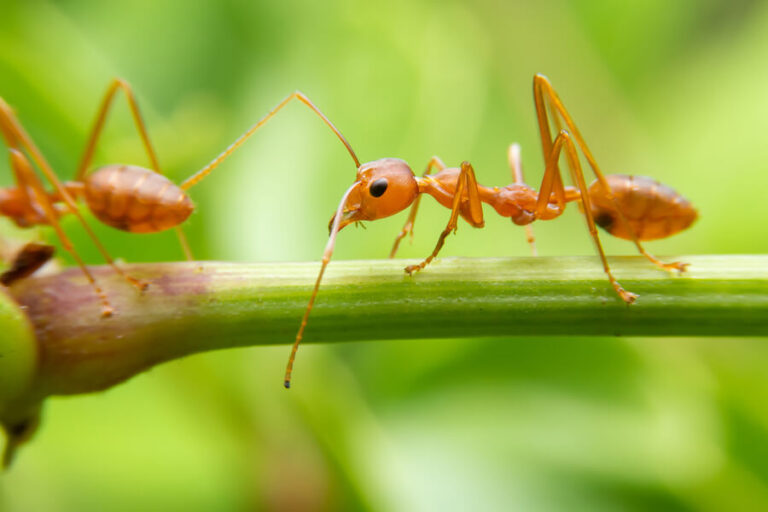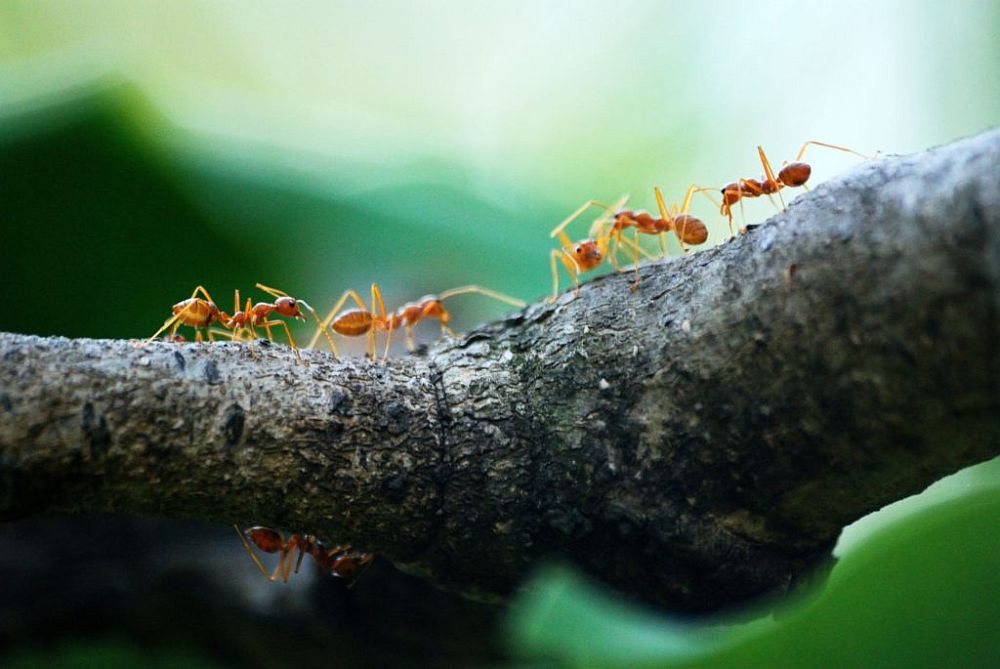Mormon Crickets
Table of Contents Mormon crickets, despite their name, are not true crickets, but a type of large insect that belongs

Are you tired of dealing with pesky fire ants in your yard or home? Not only are their bites painful, but they can also cause serious health problems for some individuals.
Fortunately, you don’t have to suffer any longer. With the right knowledge and tools, you can eliminate fire ants in just 24 hours! In this article, we will analyze methods for controlling fire ants.
In this comprehensive guide, we’ll show you how to eliminate fire ants and prevent them from returning. From identifying infestations to choosing the best removal methods, we’ll cover everything you need to know to say goodbye to fire ants for good. Get ready to reclaim your space and enjoy a fire-ant-free life!
In the United States, fire ants are divided into two major groups i.e. native and imported fire ants. The below section will explain how these fire ant groups can differ in terms of appearance as well as other factors.
The most commonly found imported fire ants are the red imported fire ants, also called the Solenopsis invicta or RIFA in short. In terms of stinging, these fire ants pose a lot of threats. This specific species of fire ant was imported to the States in 1933 through the ports of Mobile and Pensacola.
Being a dominant ant specie, these can overtake other ant species in the surrounding. They are aggressive, and in terms of reproduction, they are highly active, filling up a huge space in merely a few seconds.
Even though native fire ants are not as aggressive as the red imported fire ants, they still pose a significant threat. Native fire ants are further divided into the following categories.
Little Fire Ants: As their name suggests, these fire ants (Wasmannia auropunctata) are tiny and are often transported from one place to another by humans. They are widespread in Los Angeles County and Hawaii. Because they are tiny in size, they might get undetected until you feel their painful sting.
An important characteristic of fire ant behavior is that they prefer moist and warm places to colonize. Additionally, these organisms feed on greenery, which is why a lush environment with plenty of vegetation is ideal for them. Apart from green feed, they also require sunlight to colonize properly.
Regarding feed, fire ants’ eating habits are similar to opportunistic predators, seeking food and water from homes whenever possible. Because indoor food sources serve as nutrition for fire ants, they may nest around the base of homes and buildings.
Fire ants are dangerous to human beings as well as other small animals. They sting their prey by gripping their jaws onto them. As a result of venomous alkaloids in their stings, many people might get allergic reactions.
One common sign of a fire ant infestation is noticing dirt mounds in your yard or other areas. These mounds can be up to 18 inches high and two to three feet in diameter. However, dirt mounds aren’t the only sign that will indicate the presence of a fire ant colony.
Another major sign of fire ant infestation is the presence of trails. Fire ants form a network of trails that they use to forage for food and transport it back to their nests. These trails can often be observed as a continuous line of ants moving in a straight line, mostly in areas with abundant food sources. If you notice such trails in or around your house, it could indicate fire ant manifestation.

Fire ants usually build their nests in soil but can infest dirt piles, buildings, and fields. Invasive fire ants pose a serious threat not only to infrastructure but also to people who live there.
Fire ant stings can cause various health problems depending on the severity of the fire ant bite. Common health hazards associated with fire ant bites include pain, swelling, or even allergic reactions.
Other times people bit by fire ants can also contract secondary infections leaving behind scars. It is important to seek medical attention when you notice any symptoms.
Prevention of fire ants invasion is important to avoid health hazards and maintain a clean and clear environment. The thing about these black fire ants is that it is challenging to get rid of them once they establish a colony.
First, we will discuss how to prevent fire ants from invading your yard. Here are some tricks you can do right away.
Now, if you never want the fire ants to enter your home, you can try the following:
There are many methods to eradicate fire ants. However, every method has its pros and cons, and you must understand each before choosing the approach. Let’s briefly look at each of these removal methods one by one.
This is one of the most common and simple ways to remove fire ants. The process involves using a slow-acting insecticide in a food source that eventually kills the entire family.
Pros
Cons
Another common fire ant removal method is applying mound treatments. Here you must pour dry or liquid-based treatments directly into a fire ant mound. Liquid mound treatments work more effectively as compared to dry mound treatments.
Pros
Cons
Dumping boiling water into fire ant mounds is another easy way to remove fire ants. Boing water can kill and destroy the whole colony of fire ants. The process is simple; you only have to poke a hole in an ant mound and pour boiling water into it.
Pros
Cons

One of the easiest homemade remedies to eliminate fire ants is using soap water, and oil solution. You just have to mix 1 tablespoon of liquid soap with the same amount of cooking oil. Pour this solution into a mound, and that’s it.
Another natural way to eliminate fire ants is to use natural ant baits like borax, artificial sweeteners, baking soda, or boric acid. These substances act as natural poisons to eliminate fire ants in your home. In addition to working similarly to chemical baits, these natural baits also pose no hazards.
If you are ever stung by a fire ant, wash away the affected area with soap and water. Proceed with applying a cold compress to reduce pain or swelling, if any.
Lastly, if you are experiencing a cold or fever, get over-the-counter pain relievers such as ibuprofen or acetaminophen. Be sure to seek medical attention if the bite area becomes infected.
In addition, avoid walking or standing on areas suspected to be home to fire ant mounds. Known for their aggressive and territorial nature, fire ants attack anything perceived as threatening their colony.
If disturbed, they will swarm and sting multiple times, causing intense pain and possibly serious health problems. Their venomous sting can cause intense itching and swelling even before the formation of blisters or bumps.
Fire ants are most common in Florida and Texas, where the temperature is comparatively warm compared to other regions. Most specifically, Florida is home to several distinct fire ant species. These ants are aggressive and invasive, threatening living beings and nearby vegetation.
Another state where fire ants are a major issue is Texas. You can also find the black imported fire ant and the tropical fire ant in some regions, but the red imported fire ant is the most widespread species in Texas.
So, what is so special about these regions that they attract fire ants? Basically, fire ants are habitual of living in warm and humid regions. Throughout the year, Texas and Florida have the right weather conditions for fire ants to survive. Also, there is a lot of urban and agricultural growth in these places, which gives fire ants access to many food supplies and refuge.
Fire ants consume both plant and animal waste since they are omnivorous. They frequently consume seeds, fruits, and small insects. Moreover, they also roam in search of dead animals and eat sugary foods, including sap, honeydew, and nectar.
Due to their diversified diet and dependence on no particular food source, fire ants are challenging to control. As a result, it is often difficult to decide which pest control strategy will work out the best for eradicating them.
To sum it up, getting rid of fire ants can be time-consuming and challenging. However, with interventions like administering chemical or natural baits or drenching mounds, you can get rid of them in no time. Remember that fire ants can pose a serious threat to human life and the ecosystem in the surrounding. Because of this reason, try to address these infestations as quickly as possible.
Table of Contents Mormon crickets, despite their name, are not true crickets, but a type of large insect that belongs
Wolf spiders are generally not dangerous to humans: While wolf spiders can bite if threatened, their venom is typically not harmful to humans.
You can get advice and tips on how to kill cockroaches in your household and get rid of this pesky infestation for good. You will learn about these insects, their habits, ways of feeding, and habitats